New Delhi: When the Bharatiya Janata Party (BJP) stormed back to power with a thumping majority Thursday, the party’s national general secretary Ram Madhav chose Khan Market as the venue to celebrate.
“Till now people assumed that this was the hub of some other people, but it’s such a beautiful place, Khan Market, and now that there is a new nationalist sentiment, a nationalistic culture awakening in the people, then this will be a hub for that as well,” Madhav told an ANI reporter amid claps from BJP supporters and party workers.
@rammadhavbjp ji saying a few words on #occupykhanmarket pic.twitter.com/0tvkRjGyrT
— Karthik S (@Sautramani) May 23, 2019
The visit was neither accidental nor happenstance. Madhav was strategically feeding into the ‘Khan Market gang’ narrative set up by none other than Prime Minister Narendra Modi two weeks ago.
Meanwhile, #OccupyKhanMarket popped up as a Twitter trend Thursday afternoon. And a quick search on the social media platform showed that the hashtag had been pushed by BJP supporters as part of a campaign since 19 May — the last day of the Lok Sabha election when the exit polls were released.
I think #OccupyKhanMarket is the most brilliant idea on the table. Lets all gather at Khan Market on 23rd and rock it.
Who all are joing in?— Nisheeth Sharan (@nisheethsharan) May 19, 2019
#occupykhanmarket #modioncemore volunteers #modi2024 pic.twitter.com/Xkrl0IbJi9
— Karthik S (@Sautramani) May 23, 2019
#OccupyKhanMarket happening pic.twitter.com/K3t6dXWMjH
— Ravi Kiran (@ravithinkz) May 19, 2019
This is why, when PM Modi chose to mention Khan Market six times in an interview to The Indian Express on 13 May, he did so with intelligent intention.
“Modi’s image has not been created by the Khan Market gang, or Lutyens Delhi, but 45 years of tapasya,” Modi said.
When asked about “self-professed sympathisers of your party/ideology… hate-mongering online”, the PM said, “If the Khan Market consensus approves, you can speak anything and be applauded for it. But if the Khan Market consensus does not like you, then whatever you say is called hate speech.”
For communications consultant and political campaign adviser Dilip Cherian, the sudden targeting of Khan Market was an attempt by the Prime Minister to rebrand an otherwise alienating catch-phrase.
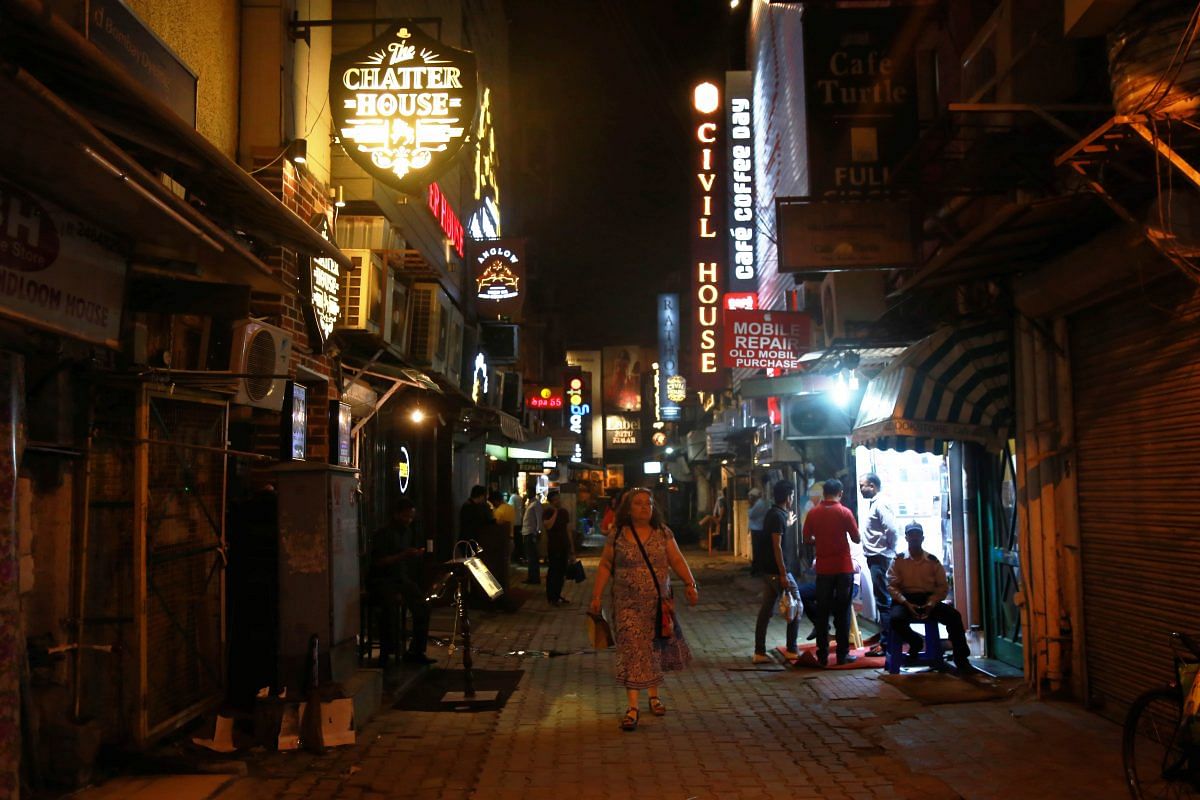
“Modi understood that four years of labouring with the term ‘Lutyens Delhi’ hadn’t got through to the minds of most average Indians,” Cherian told ThePrint. “So he wanted to coin a new phrase which would smack of elitism,” he said.
“There is a nuance which Modi was playing with,” added Cherian. “I think he was appropriating Khan Market to show their elitist-ic rejection of his ‘humble origins’. Which means that it’s not so much about the intellectuals, but those ‘who rejected me for what I am’.”
The Twitter hashtag, a play on the Occupy Wall Street movement of 2011, does exactly that. It adopts and then subverts the American Left-wing protest against economic inequality into an imagined fight of a disenfranchised working class against the elitism and exclusivity of Lutyens’ Delhi.
Also read: Why Lutyens’ neighbourhoods like Khan Market are way more inclusive than you think
For Modi, who fought the 2014 election as a ‘chaiwala’ and the 2019 election as a ‘chowkidaar‘, or for Finance Minister Arun Jaitley, whom columnist Coomi Kapoor credits with the catch-phrase, the ‘Khan Market Gang’ is essentially “a jocular reference to a group of young MPs from entitled backgrounds who often ate at Khan Market restaurants during Parliament lunch breaks”, as she wrote in The Indian Express on 19 May.
For the BJP, which has a much shorter legacy of political power than the Congress, the most prominent MP with an “entitled background” is ‘shahzada’ Rahul Gandhi.
About seven steps past the threshold of Town Hall, a restaurant in Khan Market, one finds a wall of glossy photographs bearing smiling faces of cricketers such as Shikhar Dhawan and Harbhajan Singh, and film stars Sonam Kapoor and Parineeti Chopra. One also spies a demure-looking Rahul Gandhi standing next to his mother Sonia Gandhi with take-away bags in hand.
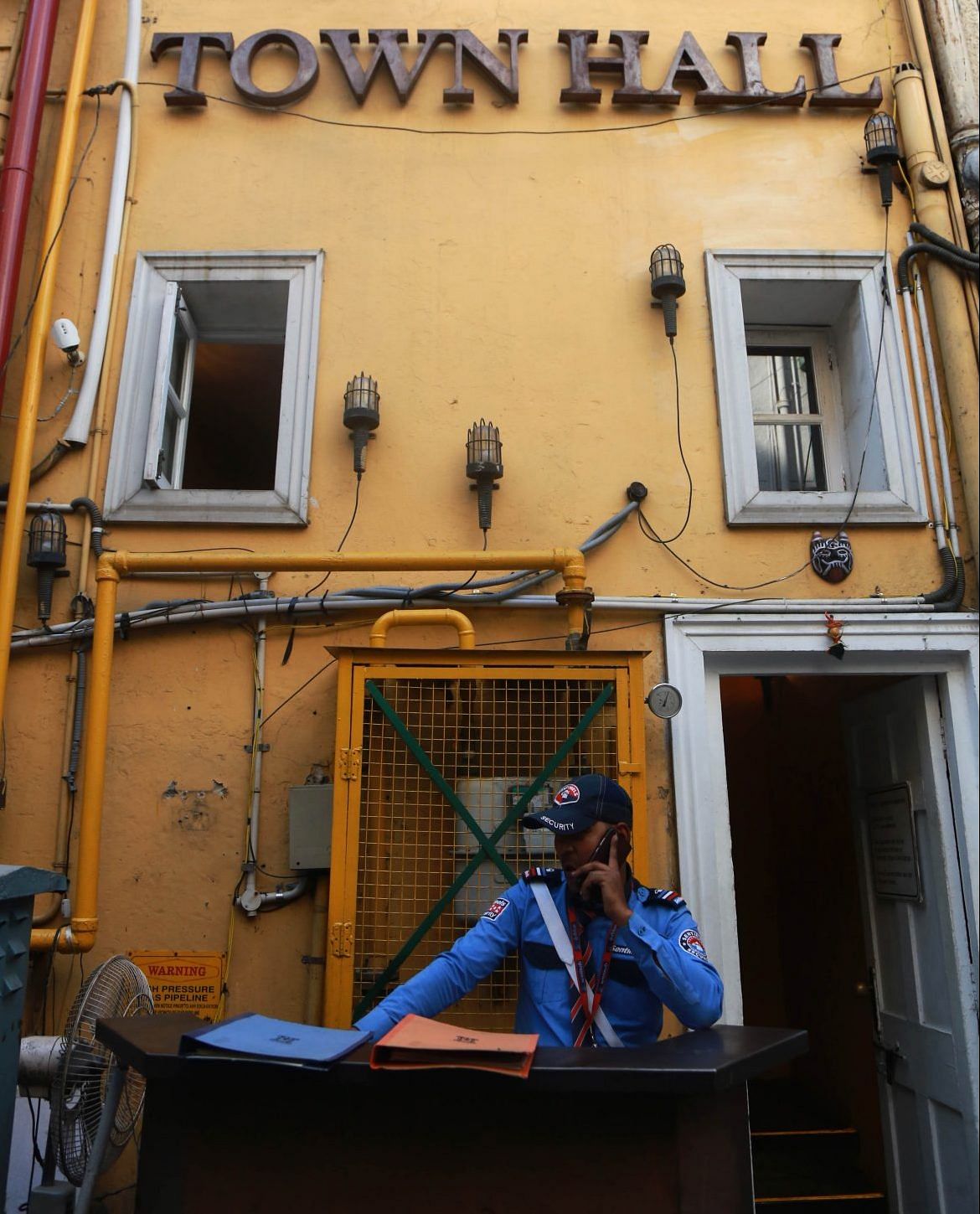
“The Gandhis really enjoy our sushi, specifically salmon and tuna,” floor manager Kunal Kumar told ThePrint in 2018, adding that the Gandhis, often accompanied by their extended family, stayed for dinner, ate quickly, and left without much fanfare.
“No special arrangements are made for them… If there is a waiting list, we seat them at the sushi bar,” he said.
Social commentator Santosh Desai wrote in The Times of India Friday that Modi’s reference to Khan Market was more than just optics. “Underneath the strategy,” he argued, there is a channeling of “real and visceral anger”.
“There is a sense of exclusion that propels this vitriolic resentment (against Khan Market), and this is also what animates the section of people that are today the engine that drives the BJP behemoth,” he wrote.
Modi’s narrative seems to have stuck, because Lutyens’ Delhi or the ‘Khan Market consensus’ — inextricably linked with perceived privilege of the Congress dynasty — has decisively lost this election.
Also read: Voters send Congress dynasts packing, from Jyotiraditya Scindia to Milind Deora
Of the 11 well-known Congress dynasts who contested, nine lost, including Congress president Rahul Gandhi (in Amethi) and Guna MP Jyotiraditya Scindia.
Back on Twitter, a Modi supporter writes that “Nothing will piss the ‘five-star liberals’ more than taking over their adda #OccupyKhanMarket”.
https://twitter.com/Banuall/status/1130069956328996864
Location, location
For those looking to expose the seeming hypocrisy of a rich, foreign-educated political class born “with a golden spoon” as Modi said of Rahul Gandhi earlier this year, then Khan Market is an easy target.
If nothing else, it is exorbitantly expensive, both for the entrepreneur and the consumer.
According to a 2016 report by Cushman & Wakefield, Khan Market is India’s most expensive place to hire a shop and is ranked 28th in the world.
Sandwiched between high-end residential complexes that are home to some of the richest Indians and government housing for senior bureaucrats, Khan Market gathers much of its prestige from an age-old real-estate formula — location, location, location.
“It is a destination for the elite crowd of Delhi, with the closest competition coming from Connaught Place, but even that has a relatively mixed crowd,” Rajat Kapoor of Jones Lang LaSalle (JLL) told ThePrint. “Just look at everything around Khan Market.”
A two-kilometre radius around the market envelops cultural watering holes like the India Habitat Centre and the India International Centre, considered the upscale mecca of the capital’s intellectuals. Golf Links, Lodhi Estate, Amrita Shergil Marg, Shahjahan Road, Pandara Road, Rabindra Nagar and Sujan Singh Park are all a stone’s throw away, where civil servants, embassies, fancy hotels, and ageing politicians all find their address.
As of 2016, a single square foot in Khan Market was commanding monthly rentals of Rs 1,250 per year, compared to Rs 850 in Connaught Place. By 2019, that value had shot up to Rs 1,350, while Linking Road in Mumbai, India’s financial capital, is still just at Rs 800.
If you want to buy property in Khan Market, be ready to be set back close to Rs 4 or 5 lakh rupees per square foot for the ground floor.
“The last sale was a 150-square-foot store that went for Rs 7.5 crore in 2018,” Kapoor of JLL said.
Also read: Move over Gully Boy, this rap song on Modi is shock-and-awe attack on Khan Market wannabes
A colony for Partition refugees
However, the picture was vastly different in 1950, when Khan Market was set up by the Ministry of Relief and Rehabilitation as a refugee colony for those displaced by the 1947 Partition: There was nothing here but 74 small apartments above and shops for corresponding families below. Now, only four of the original residents remain, with the rest of the residential real estate since converted into branded boutiques, restaurants and cafes, either by flouting bylaws or paying a hefty conversion charge to the New Delhi Municipal Council.
Even till 15 years ago, “Khan Market was a simpler place”, Mamta Bamhi, 49, owner of the bookstore Faqir Chand & Sons, told ThePrint.
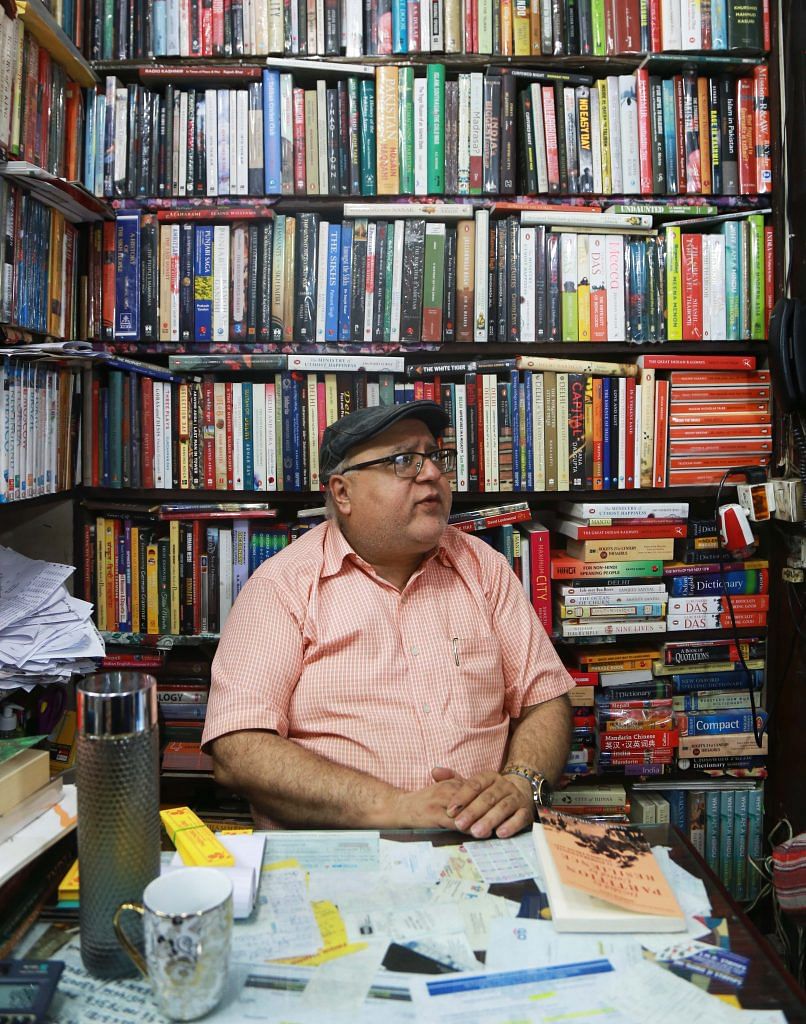
“There used to be a park and a fountain where the parking lot is now. It’s become a commercial, branded market, as opposed to [one hosting] family-run businesses,” she said.
Faqir Chand & Sons has been around since the birth of Khan Market, set up by Bamhi’s grandfather who relocated from Peshawar to Delhi in 1948.
“Everyone chose to either sell or rent out their homes because they were getting very high rates, Rs 8 lakh a month, and with increasingly high demand,” she added.
In the last two decades, one of India’s first department stores, Sovereign Dairies, has become Anokhi, Alfina Restaurant is The Body Shop, while Empire Stores, Carry Home ice-cream parlour and Bangla Sweet Corner have all but faded from memory.
“It’s an interesting exercise to try and recall what was not available in Khan Market in the 1960s,” book editor Nandini Mehta wrote in Outlook India in 2006. “There were no readymade women’s clothes, no bread except sliced white, no sneakers except smelly white or brown canvas keds, no cosmetics except talcum powder, kajal, and what was known as ‘vanishing’ or ‘cold’ cream. You couldn’t buy a cup of coffee there — and you never saw a foreigner either (the diplomats shopped in CP).”
By the late 1970s, the area surrounding Khan Market, from Connaught Place to India Gate, was still largely desolate, and finding someone strolling on the streets after 7 pm was rare, Dinesh Bali, spokesperson of the Khan Market Traders Association, said.
The diplomats, visiting foreign officials and expats, however, had discovered its convenience over CP by that time, leading it to gain the name “Angrezon ki market”.
With the explosion of the cafe culture in the late 1990s and early 2000s, Khan Market was perfectly poised for another transformation.
“The markets which don’t have restaurants don’t do well,” Bali said. “There is nothing in New York, Hong Kong, Tokyo or London that you won’t find here,” he added.
Executive chef Agnibh Mudi partly agreed, crediting the success of standalone restaurants to their ability to match, and often exceed, the standards and experience that were earlier only provided by five-star hotels.
“The location of Khan Market, very close to Lutyens’ Delhi, the embassies, residences of industrialists and business tycoons, makes it easier to commute for high-profile customers,” Mudi told ThePrint last year.
“Our way of service and quality of beverage and food is probably up to their standards. After all, Khan Market is still what it has always been,” he added.
From Atal Bihari Vajpayee to Sonia Gandhi
But it’s not only members of the Congress that visit Khan Market.
Ratna Singh, a former Congress MP, told ThePrint she had been visiting Anand Stores since the 60s. “No one party favours this market,” she said. “I’ve seen everybody here.”
The store, one of the few surviving shops from Khan Market’s early days, has served Bollywood stars Shah Rukh Khan and Saif Ali Khan for years.
Banarasidas Singh, the third-generation owner of Khan Market’s Bombay Fruit Mart, boasts of a high-profile clientele that includes everyone from the Gandhi family to the Birlas.
“Every politician, industrialist, bureaucrat comes here. In his day, even Atal Bihari Vajpayee came. Manmohan Singh too,” he added.
“They tend to come here because the quality is good, they know we are accountable for the goods we sell.”
A man who runs errands for Sonia Gandhi, Rajendra Yadav, walked in to buy capsicums and tomatoes while this reporter was at the shop.
“I’ve worked with Soniaji for 20 years or so. I’ve been coming to this store for that long,” he told ThePrint. “You get choice items here.”
ThePrint caught up with K.C. Tyagi, a Janata Dal (United) Rajya Sabha member, as he emerged from Choko La, a bakery. “I’ve been coming to Khan Market all my life,” he said. “But I’m not part of the gang. How can I be? I’m part of the National Democratic Alliance (NDA).”
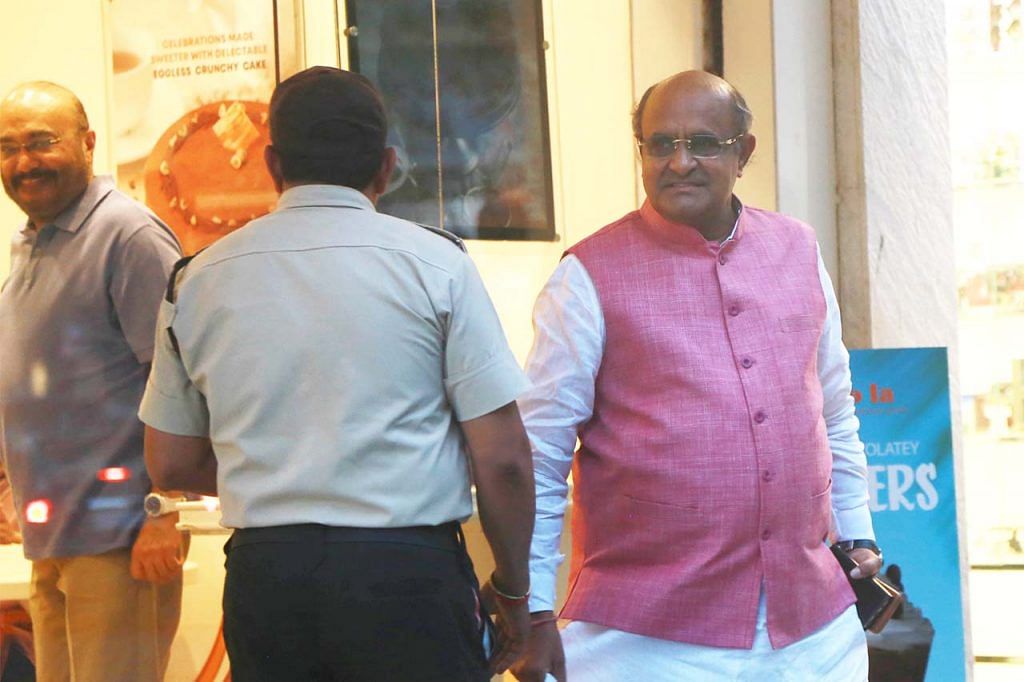
Ram Gopal Yadav of the Samajwadi Party is also known to visit Choko La for a cup of coffee every evening. Subramanian Swamy of the BJP is regularly seen hop-scotching between street dogs, with his protected pooch in his arms, to reach the Windsor pet shop.
“Smriti Irani is a regular at my store,” Bali, the spokesperson, said, seated inside a small make-shift office inside his jewellery shop Symetree.
Union minister Smriti Irani, who defeated Rahul Gandhi from Congress bastion Amethi, has also visited Smokehouse Deli with her family, ordering a variety of pizzas and pastas on the menu, according to staff at the restaurant.
The staff at Smoke House has become so used to seeing high-profile politicians, celebrities and sports stars that they no longer register it as a special occasion.
“We have seen a lot of BJP leaders — in fact from all parties,” said Bali. “Everyone from Amar Singh, Ravi Shankar Prasad, Mani Shankar Aiyar, Sheila Dikshit, Anant Kumar Hegde come here — we’ve seen them so many times. Individually they go to book shops, or a spectacles store or at the back to buy groceries,” he added, stressing, “We must understand this. Khan Market is the local market for entire Lutyens; Delhi. If you want bread, butter, milk, you tell me, which other market will you go to if you live nearby?”
Bali enthusiastically recalled a time he saw the late George Fernandes, while he was defence minister, strolling through Khan Market with bread and butter in one hand and eggs in the other. “I asked him, sir, you’re a defence minister, where is your security?”
“Why do I need security?” Fernandes is said to have replied. When Bali suggested that he might be shot or attacked, the union minister said, “Oh, I give them a chance.”
With inputs from Simrin Sirur.


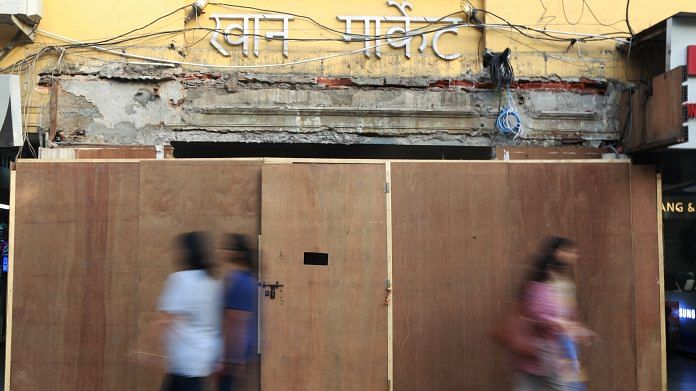

The janeu dhari shiv bhakth eats sushi??
Sanjay gandhi at least acknowledged his parsi heritage, and wanted to raise his children in the parsi religion